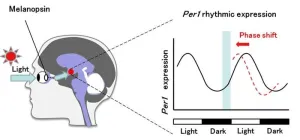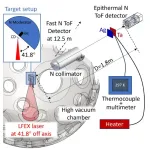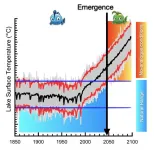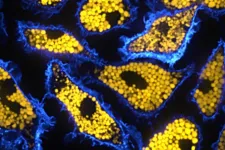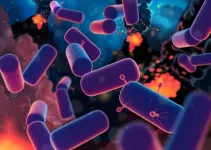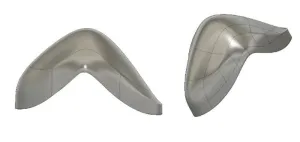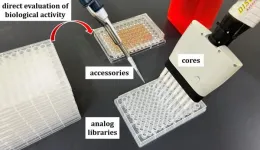African American men have a higher incidence of prostate cancer and are more than twice as likely to die from the disease than White men in the U.S. They are often diagnosed with an aggressive cancer and at an earlier age, but the reasons are not well understood.
“Our findings suggest an impact of living in disadvantaged neighborhoods – which more commonly affects African Americans – on stress-related genetic pathways in the body. We believe this may increase an individual’s risk of aggressive prostate cancer and contribute to prostate cancer disparities by race,” said the senior author, Kathryn Hughes Barry, PhD, MPH, Assistant Professor in the Department of Epidemiology and Public Health at UMSOM and a cancer epidemiology researcher at the University of Maryland Greenebaum Comprehensive Cancer Center (UMGCCC).
The study found that neighborhood disadvantage was associated with significantly higher activity, or expression, of stress-related genes. Experiencing extreme hardships or trauma can affect how much the genes in our DNA are expressed, setting off a cascade of events that can give rise to cancer or other negative health consequences.
Five genes that had higher expression in this study are related to inflammation, which is relevant to prostate cancer, among other health conditions. Increased inflammation has been linked with a higher chance of developing prostate cancer or a higher likelihood that the cancer will progress in men who have the disease. The gene with the strongest link was HTR6, part of the serotonin pathway, which helps carry messages between the brain and other parts of the body. HTR6 also contributes to other pathways that are thought to help regulate the body’s immune response, and various HTR genes have been linked with lethal prostate cancer.
Dr. Barry said this observational study, which analyzed 105 stress-related genes from more than 200 African American and White men with prostate cancer, is among the first to suggest a possible link between neighborhood socioeconomic factors and RNA expression in prostate tumors. RNA (ribonucleic acid) comes from DNA and is involved in producing proteins that help the cell function.
“We need to conduct larger studies to investigate the interrelationships of different neighborhood factors, individual-level factors, tumor biology, tumor aggressiveness, and patient outcomes to help inform interventions to reduce prostate cancer disparities,” Dr. Barry said. She and her colleagues plan a broader follow-up study that would include data from patients in other regions of the U.S.
Dr. Barry said that the levels of RNA produced by genes can change in response to various environmental factors. “An individual’s RNA levels can change in response to stress, and we and others hypothesize that resulting biologic effects, such as increased inflammation, may contribute to increased risk of aggressive prostate cancer,” she said.
Joseph Boyle, PhD, the study’s first author who is a postdoctoral research fellow and biostatistician at the Massey Comprehensive Cancer Center at VCU, added, “The findings from our study support and build on existing research on the emerging importance of neighborhood factors and chronic stress to better understand aggressive prostate cancer and persistent racial disparities.”
David C. Wheeler, PhD, MS, MPH, Professor in the Department of Biostatistics at VCU and a biostatistician at the Massey Comprehensive Cancer Center, was co-senior author of this study.
The research team analyzed tumor tissue from 218 men with prostate cancer who underwent radical prostatectomy surgery to remove their prostate at the University of Maryland Medical Center (UMMC) from 1992-2021. Of these, 168, or 77 percent, reported their race as African American and the remaining 50 patients reported their race as White.
Researchers evaluated neighborhoods where patients lived at the time of their diagnosis, relying on two indexes that measured neighborhood deprivation, taking into account income, education, employment and housing quality. They also looked at racial segregation and historical redlining in which certain neighborhoods were systematically denied mortgage applications or refinancing, often based on race. While historical redlining occurred in the 1930s, such racist housing policies have led to long-term disinvestment and disadvantage that have been linked with worse health outcomes, including cancer outcomes, in the present day. Supporting the long-term impact of such policies, the current study observed that neighborhoods in the Baltimore area that were formerly redlined also tended to have higher disadvantage today.
Consistent with previous research, the current study also found that African American participants were more likely to live in disadvantaged neighborhoods than their White counterparts. Higher degrees of disadvantage occurred in Baltimore City compared with the rest of Maryland. Within Baltimore, higher disadvantage occurred in the central and western areas of the city.
“The research reveals a complex interplay between environment and genes, which is becoming increasingly important in the study of cancer health disparities,” said Mark T. Gladwin, MD, who is the John Z. and Akiko K. Bowers Distinguished Professor and Dean of UMSOM, and Vice President for Medical Affairs at University of Maryland, Baltimore. “It provides support for a potentially harmful effect of living in economically disadvantaged communities on stress-related genetic signaling pathways, such as the Conserved Transcriptional Response to Adversity, and underscores the importance of developing interventions to improve the health and well-being of our minority populations.”
The research was funded by an American Cancer Society Institutional Research Grant and several grants from the National Cancer Institute (NCI). The Maryland Department of Health’s Cigarette Fund Restitution Program and the National Center for Advancing Translational Sciences provided additional financial support.
About the University of Maryland School of Medicine
Now in its third century, the University of Maryland School of Medicine was chartered in 1807 as the first public medical school in the United States. It continues today as one of the fastest growing, top-tier biomedical research enterprises in the world -- with 46 academic departments, centers, institutes, and programs, and a faculty of more than 3,000 physicians, scientists, and allied health professionals, including members of the National Academy of Medicine and the National Academy of Sciences, and a distinguished two-time winner of the Albert E. Lasker Award in Medical Research. With an operating budget of more than $1.2 billion, the School of Medicine works closely in partnership with the University of Maryland Medical Center and Medical System to provide research-intensive, academic and clinically based care for nearly 2 million patients each year. The School of Medicine has nearly $600 million in extramural funding, with most of its academic departments highly ranked among all medical schools in the nation in research funding. As one of the seven professional schools that make up the University of Maryland, Baltimore campus, the School of Medicine has a total population of nearly 9,000 faculty and staff, including 2,500 students, trainees, residents, and fellows. The combined School of Medicine and Medical System (“University of Maryland Medicine”) has an annual budget of over $6 billion and an economic impact of nearly $20 billion on the state and local community. The School of Medicine, which ranks as the 8th highest among public medical schools in research productivity (according to the Association of American Medical Colleges profile) is an innovator in translational medicine, with 606 active patents and 52 start-up companies. In the latest U.S. News & World Report ranking of the Best Medical Schools, published in 2023, the UM School of Medicine is ranked #10 among the 92 public medical schools in the U.S., and in the top 16 percent (#32) of all 192 public and private U.S. medical schools. The School of Medicine works locally, nationally, and globally, with research and treatment facilities in 36 countries around the world. Visit medschool.umaryland.edu
About the University of Maryland Marlene and Stewart Greenebaum Comprehensive Cancer Center
The University of Maryland Marlene and Stewart Greenebaum Comprehensive Cancer Center is a National Cancer Institute-designated comprehensive cancer center within the University of Maryland Medical Center in Baltimore. It offers a multidisciplinary approach to treating all types of cancer and has an active clinical and basic science research program through its relationship with the University of Maryland School of Medicine. The center is ranked among the top cancer programs in the country. www.umgccc.org
#####
END

